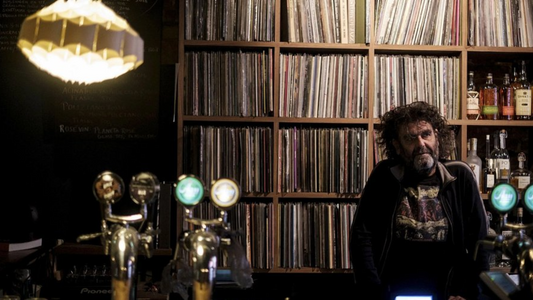
Pat Metheny – Bright Size Life (1976)
By Rafi Mercer
Some albums arrive like first light. They don’t crash into the world with force; they seep into it, quietly establishing themselves until you can no longer imagine the landscape without them. Pat Metheny’s Bright Size Life, recorded in 1975 and released in 1976, is one of those records. It was his debut as a leader, a young guitarist just twenty-one years old, joined by two already-mythic figures: Jaco Pastorius on bass and Bob Moses on drums. Together, they created a record that feels not like a beginning but like something already complete, a sound fully formed, fresh as morning air.
The first thing that strikes you is Metheny’s tone. Clean, rounded, bright without edge, it carries the clarity of someone who knows exactly what he wants to sound like. Even at that age, he avoided the distortion and aggression common in the mid-70s. Instead, his guitar sings — lyrical, spacious, melodic. The opening track, “Bright Size Life,” feels like the curtain rising on a day. The melody is simple yet radiant, the rhythm fluid, the harmony open. Jaco’s bass dances beneath, agile and articulate, as if narrating its own story alongside the guitar. Bob Moses provides pulse and colour rather than strict time, his drumming conversational, alive.
What makes the record remarkable is its balance between sophistication and ease. The compositions are harmonically rich, yet never heavy. They flow with a natural grace, carrying echoes of folk, country, and rock as much as jazz. Metheny has often spoken about the influence of the Midwestern landscape on his sound, and you hear it here — wide horizons, open skies, melodies that stretch like roads disappearing into distance. On a morning listen, the record feels like a landscape unfolding, familiar yet endlessly fresh.
On vinyl or a well-set system, the sound is crystalline. Metheny’s guitar is recorded with warmth and presence, every nuance of his phrasing intact. Jaco’s bass is astonishing — not only the virtuosity of his runs but the singing quality of his tone, the sustain and resonance that still sound futuristic today. You hear the wood of the instrument, the way notes bloom and fade. Moses’ drums are mixed with space, cymbals shimmering, toms resonant, the kit less engine than atmosphere. Together, the trio sound both intimate and vast, as though they are playing just for you and for the whole world at once.
Tracks like “Unity Village” and “Omaha Celebration” show the group’s playful side, rhythmic and exploratory without ever losing their melodic core. “Missouri Uncompromised” is reflective, almost hymn-like, a reminder that Metheny’s writing was already capable of stillness as well as motion. And “Round Trip/Broadway Blues,” the Ornette Coleman piece that closes the record, ties it back to a wider jazz lineage, showing that Metheny’s lyricism was not a retreat from the avant-garde but a parallel route toward freedom.
What sets Bright Size Life apart, especially for deep listening, is its tone of optimism. Many jazz records of the 1970s wrestled with density, fusion’s complexity, or electric intensity. This album, by contrast, breathes. It doesn’t deny virtuosity — Jaco’s playing alone is proof of that — but it never confuses complexity with expression. Every note feels necessary, nothing ornamental. The trio sound like they are discovering the music as they play it, and that sense of discovery still reaches across the decades.
In a listening bar, Bright Size Life changes the room’s quality. Drop the needle on the title track and the space brightens, conversations soften, the air feels lighter. It is not music that overpowers; it invites. People lean in, not because they must but because they want to. The interplay between Metheny and Pastorius becomes a kind of dialogue you can eavesdrop on, full of wit, lyricism, and mutual respect.
At home in the morning, the record works like coffee without caffeine. It clears the mind, sets a rhythm, establishes calm without inertia. The brightness is never harsh; it is generous. Listening closely, you hear the patience in Metheny’s phrasing, the way he leaves space for notes to resonate, the way Jaco fills that space not by crowding but by complementing. It is a masterclass in listening to one another, in allowing each instrument to be both soloist and accompanist.
Nearly fifty years on, Bright Size Life still sounds fresh. Metheny would go on to create a vast catalogue, from trio records to sprawling orchestrations, from ECM soundscapes to world music fusions. Yet this debut remains central. It contains the DNA of what would follow: lyricism, openness, melody as architecture. Jaco, too, is preserved here at his peak, his sound forever youthful, forever daring. Moses provides the balance, the elasticity that keeps the music grounded yet fluid.
Some albums are classics because of their scale or ambition. Others because of their timing, capturing a cultural moment. Bright Size Life is a classic because of its clarity. It is a statement of identity, a declaration of tone. It says: here is how the guitar can sound, here is how a trio can converse, here is how jazz can be modern without losing its song. It has become, for many, not just a debut but a benchmark.
Drop the needle, let the opening melody spill into the room, and you will understand why. The album is not loud, not grand, not forceful. It is simply luminous. And sometimes, that is exactly what you need — a record that begins the day by reminding you that music, like light, can be both gentle and profound.
Rafi Mercer writes about the spaces where music matters. For more stories from Tracks & Tales, subscribe, or click here to read more.







